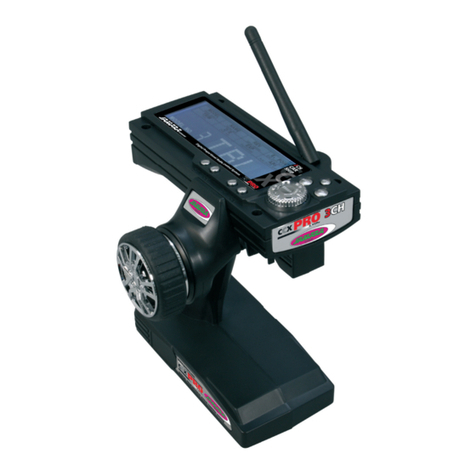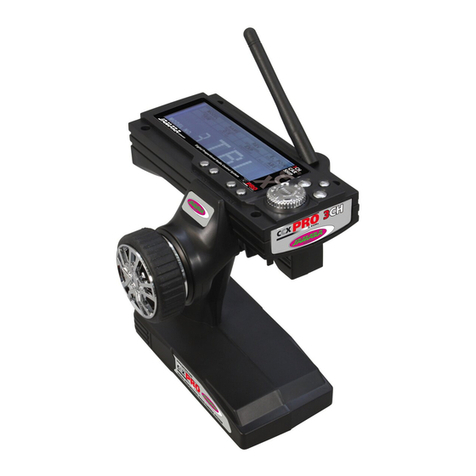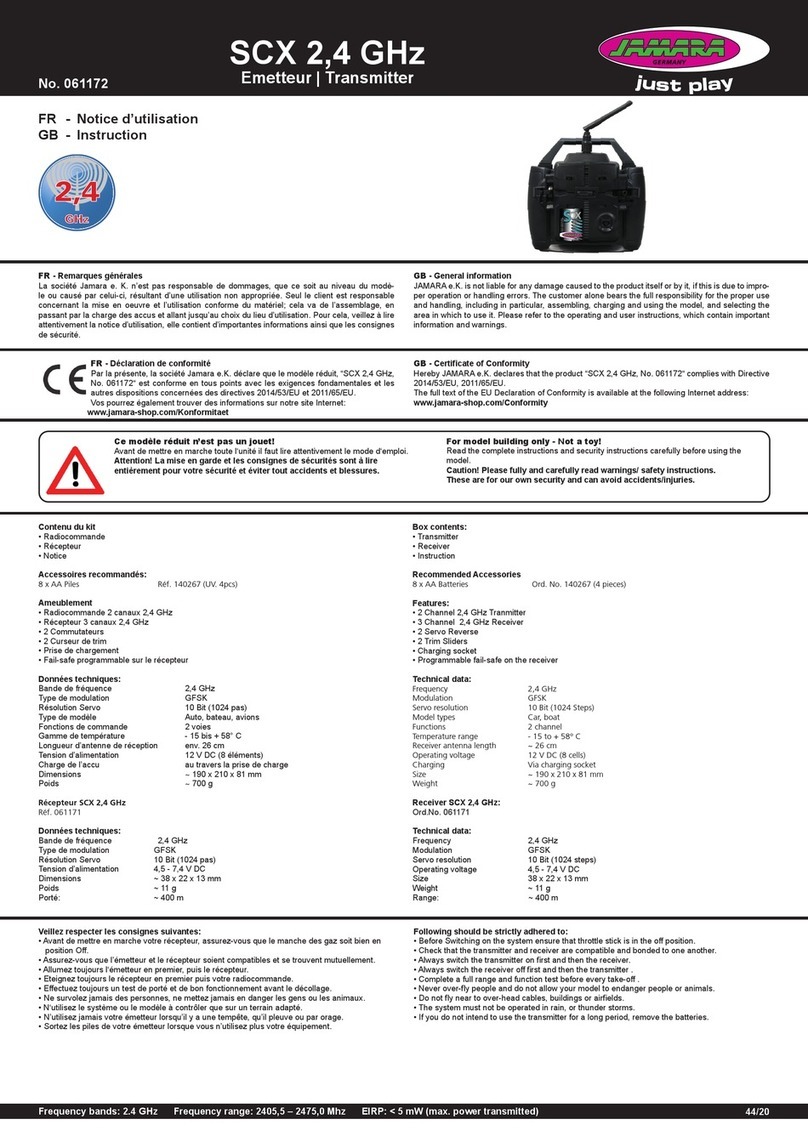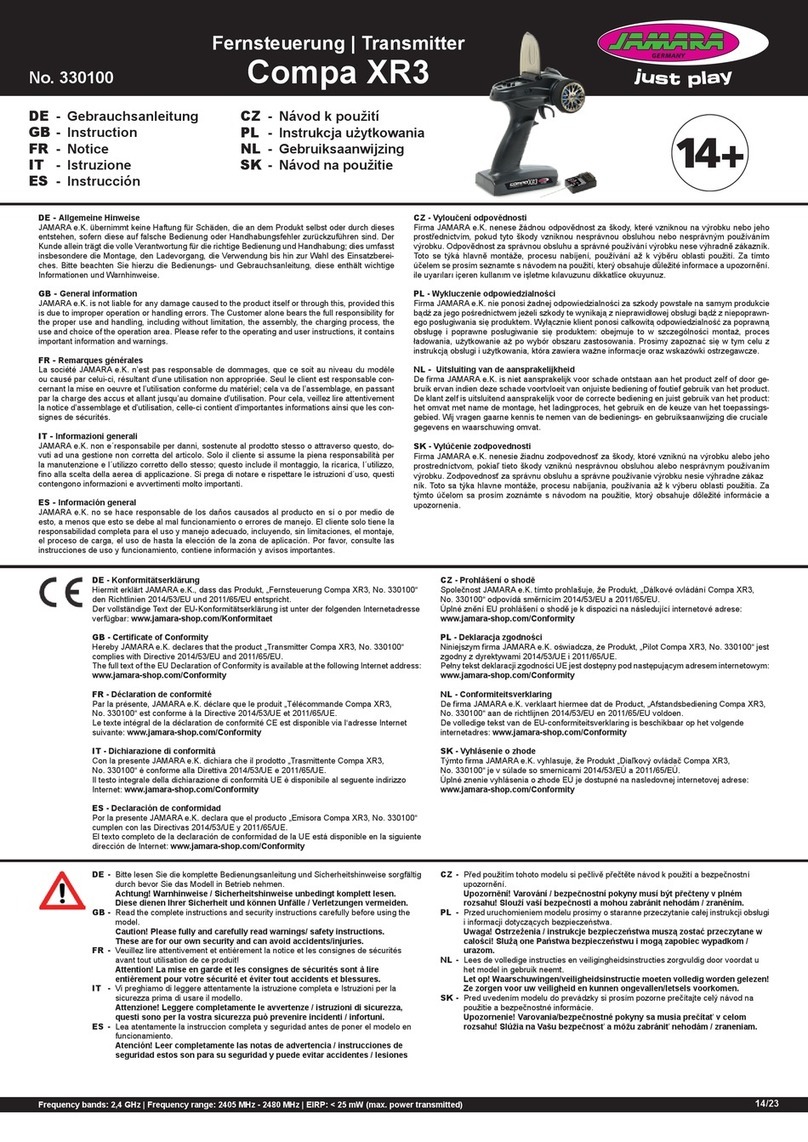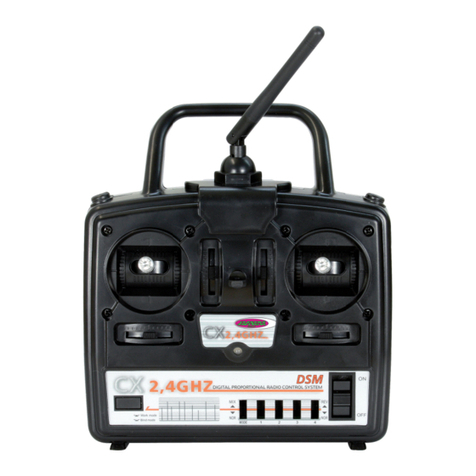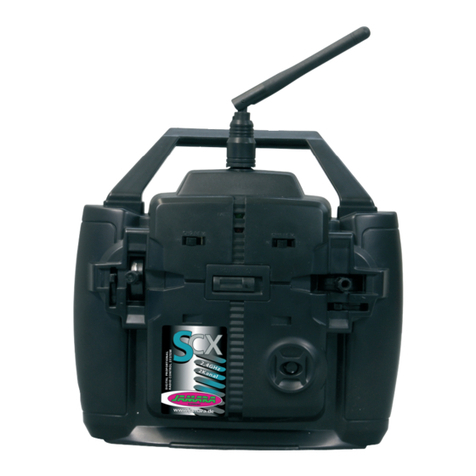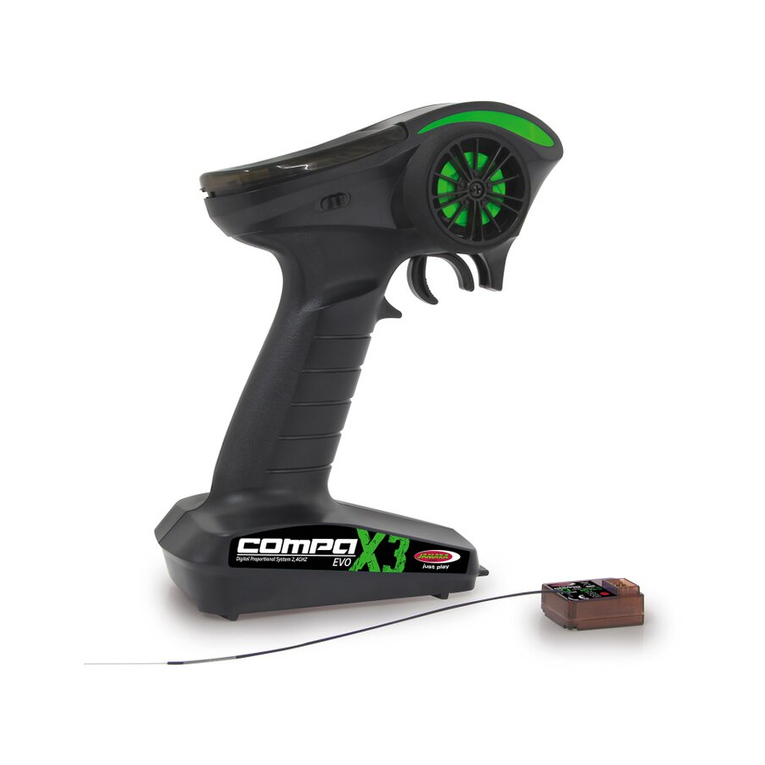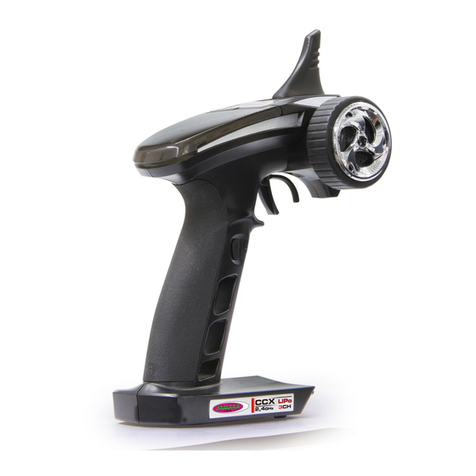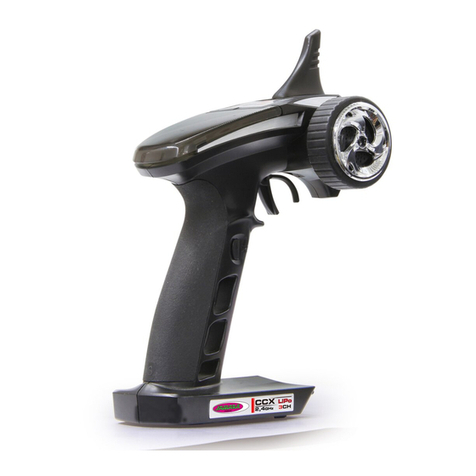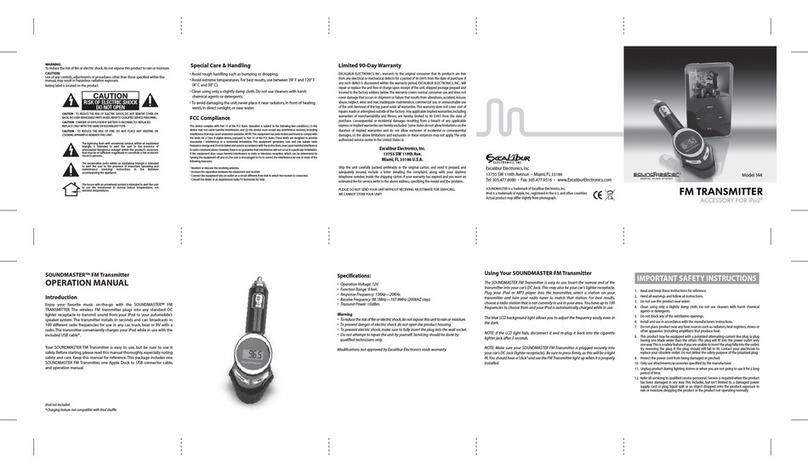
DE - Gebrauchsanleitung
GB - Instruction
CCX Lipo 2,4 GHz 3 CH
Fernsteuerung | Transmitter
No. 061201
15/1644/20
DE - Allgemeine Hinweise
JAMARA e.K. übernimmt keine Haftung für Schäden, die an dem Produkt selbst oder durch dieses
entstehen, sofern diese auf falsche Bedienung oder Handhabungsfehler zurückzuführen sind. Der
Kunde allein trägt die volle Verantwortung für die richtige Bedienung und Handhabung; dies umfasst
insbesondere die Montage, den Ladevorgang, die Verwendung bis hin zur Wahl des Einsatzberei-
ches. Bitte beachten Sie hierzu die Bedienungs- und Gebrauchsanleitung, diese enthält wichtige
Informationen und Warnhinweise.
GB - General information
JAMARA e.K. is not liable for any damage caused to the product itself or by it, if this is due to impro-
per operation or handling errors. The customer alone bears the full responsibility for the proper use
and handling, including in particular, assembling, charging and using the model, and selecting the
area in which to use it. Please refer to the operating and user instructions, which contain important
information and warnings.
Konformitätserklärung
Hiermit erklärt JAMARA e.K., dass das Produkt‚ “CCX Lipo 2,4 GHz, No. 061201“
den Richtlinien 2014/53/EU, 2011/65/EU entspricht.
Der vollständige Text der EU-Konformitätserklärung ist unter der folgenden
Internetadresse verfügbar: www.jamara-shop.com/Konformitaet
GB - Certicate of Conformity
Hereby JAMARA e.K. declares that the product “CCX Lipo 2,4 GHz, No. 061201“ complies with
Directive 2014/53/EU, 2011/65/EU.
The full text of the EU Declaration of Conformity is available at the following Internet address:www.
jamara-shop.com/Conformity
Lieferumfang
• Fernsteuerung
• Empfänger
• Akku LiPo 3,7 V 800 mAh 2,96Wh
• USB Ladekabel
• Anleitung
Empfohlenes Zubehör
8 x AA Batterie Art.-Nr. 140267 (VE 4 Stück)
Ausstattung
• 3 Kanäle
• 2,4 GHz System
• Dual Rate
• Servo Revers (Gas/Lenkung)
• Justierung Servomitte
• Modulationsart AFHDS
• Modelltypen Auto, Schi
• Betriebsspannung 3,7 V
• Unterspannungswarnung
• USB-Ladebuchse
• Fail-Safe am Empfänger
• Gewicht 270 g
• Maße 156 x 223 x 94 mm
Empfänger CCX Pro 2,4 GHz
Art.-Nr. 06 1185
Technische Daten:
Frequenzband 2,4 GHz
Modulationsart AFHDS
Betriebsspannung 4,8 - 7,4 V DC
Servoauösung 10 Bit (1024 Schritte)
Abmessungen 33 x 22 x 12 mm
Gewicht 5 g
Box contents:
• Transmitter
• Receiver
• Battery LiPo 3,7 V 800 mAh 2,96Wh
• USB charging cable
• Instruction
Recommended Accessories
8 x AA Batteries Ord. No. 140267 (4 pieces)
Features:
• 3 channel
• 2,4 GHz System
• Dual Rate
• Servo reverse (Gas/steering)
• Adjustment of servo centre
• Modulation AFHDS
• Model types Car, boat
• Operating range 3,7 V
• Low-Voltage warning
• Charging socket USB
• Fail Safe on receiver
• Weight 270 g
• Size 156 x 223 x 94 mm
Receiver CCX Pro 2,4 GHz
Ord.No. 06 1185
Technical data:
Frequency 2,4 GHz
Modulation AFHDS
Operating voltage 4,8 - 7,4 V DC
Servo resolution 10 Bit (1024 steps)
Dimensions 33 x 22 x 12 mm
Weight 5 g
Modellbauartikel - Kein Spielzeug!
Bitte lesen Sie die komplette Bedienungsanleitung und Sicherheitshinweise sorgfältig
durch bevor Sie das Modell in Betrieb nehmen.
Achtung! Warnhinweise / Sicherheitshinweise unbedingt komplett lesen.
Diese dienen Ihrer Sicherheit und können Unfälle / Verletzungen vermeiden.
For model building only - Not a toy!
Read the complete instructions and security instructions carefully before using the
model.
Caution! Please fully and carefully read warnings/ safety instructions.
These are for our own security and can avoid accidents/injuries.
Beachten Sie unbedingt folgende Hinweise:
• Bevor Sie den Empfänger einschalten stellen Sie sicher, dass der Gasgeber auf Motor-Aus steht.
• Stellen Sie sicher, dass der Sender und der Empfänger richtig zusammen arbeiten, richtig
gebunden sind.
• Schalten Sie immer zuerst den Sender und dann den Empfänger ein.
• Schalten Sie immer zuerst den Empfänger, dann den Sender aus.
• Führen Sie vor dem Start einen Reichweiten- und einen Funktionstest durch.
• Gefährden Sie weder Menschen noch Tiere.
• Setzen Sie die Anlage bzw. das zu steuernde Modell nur in geeignetem Gelände ein.
• Bei Sturm, Regen oder einem Gewitter dürfen Sie Ihre Anlage nicht einsetzen.
• Wenn die Anlage länger nicht eingesetzt wird, entfernen Sie die Batterien aus dem Sender.
Following should be strictly adhered to:
• Before Switching on the system ensure that throttle stick is in the o position.
• Check that the transmitter and receiver are compatible and bonded to one another.
• Always switch the transmitter on rst and then the receiver.
• Always switch the receiver o rst and then the transmitter .
• Complete a full range and function test before every take-o .
• Never over- y people and do not allow your model to endanger people or animals.
• Do not y near to over-head cables, buildings or air elds.
• The system must not be operated in rain, or thunder storms.
• If you do not intend to use the transmitter for a long period, remove the batteries.
Frequency bands: 2.4 GHz Frequency range: 2405,5 – 2475,0 MHz EIRP: < 40 mW (max. power transmitted)
